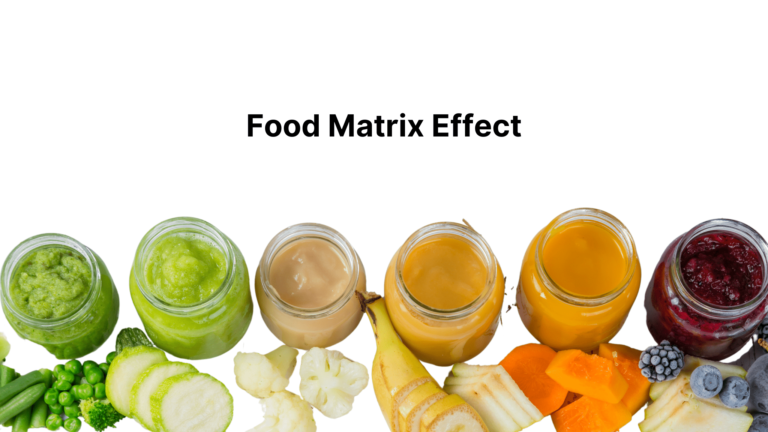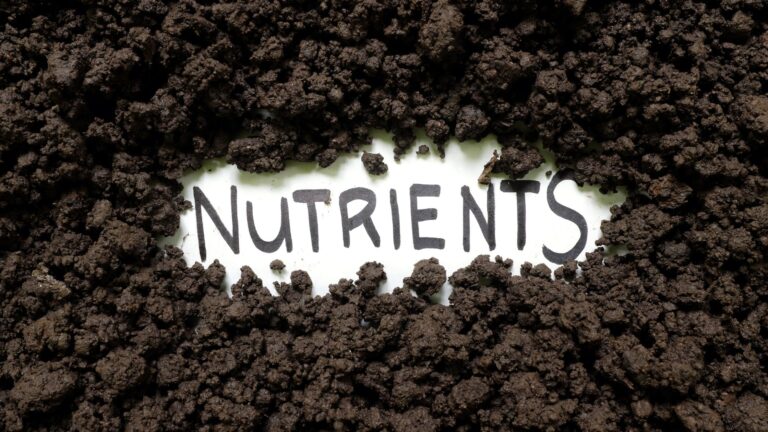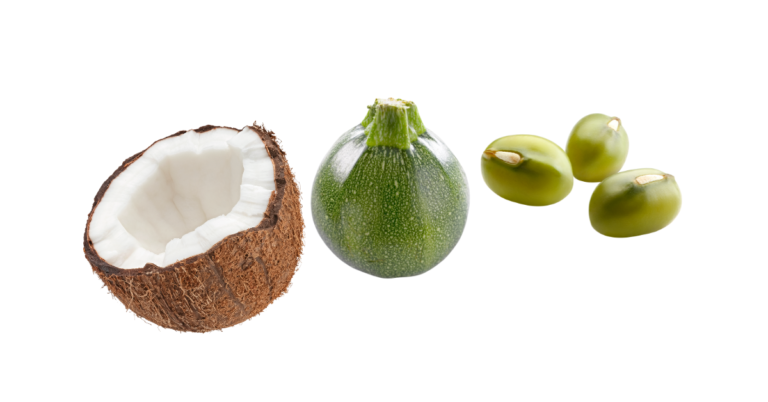Anti-Inflammatory Nutrition, Centenarians, Better Diet
Anti-inflammatory nutrition involves foods that help reduce or maintain balance regarding the body’s natural inflammation responses. Particular foods, such as polyphenolic-rich vegetables, contain active compounds that exhibit anti-inflammatory actions when consumed. An anti-inflammatory food source may also include several compounds that work together in synergy, adding to its anti-inflammatory actions.
Typically, we understand inflammation as a response by the body to stimuli, which may occur to protect and heal itself from injury, infection or toxic agents.
This article explores the role of inflammation and the influence of diet (a modifiable factor) in regulating it for a healthy lifespan. For example, in a frame of reference, centenarians with a lifespan of 100 years or more display low or reduced levels of inflammation referenced in both holistic and modern sciences.
Key Takeaways
- An overview of inflammation, the difference between low and chronic inflammation. Can consuming anti-inflammatory nutrition act as preventative nutrition?
- Anti-inflammatory nutrition can support vitality and longevity. For instance, “Inflammation has been recognised as an endogenous factor in aging, and eliminating inflammation could be a potential strategy for anti-aging,” (Li et al., 2023).
- In the context of inflammation levels, the juxtaposition of low-grade inflammation followed by rapid repair is part of the healing process, as opposed to chronic inflammation.
- Centenarians have been referenced for their healthy lifespans in holistic and modern sciences, with regulated inflammation levels, as a basis for holistic, scientific anti-inflammation strategies through diet and lifestyle.

Inflammation
Inflammation is an ancient medical term initially referring to classic signs and symptoms. The signs of inflammation may include loss of function, heat, pain, redness, and swelling. Inflammation is part of the body’s biological response to harmful stimuli, such as irritants, pathogens, and damaged cells, Stone et al. (2024).
It is the body’s repair and healing process when triggered and understood through various signs. Our body has the inbuilt capacity to regulate inflammation. Usually, the body returns to homeostasis once the catalyst has been countered.
Understanding The Inflammation Process
Tristan Asensi M, Napoletano A, Sofi F, and Dinu M (2023) state the following regarding the process of inflammation:
When inflammation begins, the body’s innate immune cells detect the presence of pathogens or cell damage and start the inflammatory process by releasing proinflammatory mediators.
These signals also trigger changes in white blood cells and the small blood vessels, leading to increased vasodilation (widening or relaxation of blood vessels) and vascular permeability (leakiness of blood vessels), allowing white blood cells to travel from the blood to the affected tissues.
Self-Limiting Nature of Regulated Inflammation: A pivotal point
They further suggest that the inflammation activity resolves once the catalyst has been countered. By nature, it is temporarily restricted and self-limiting to maintain a stable internal environment.
However, a chronic inflammatory process can develop if the immune system fails to resolve the inflammation or if the body continues to be exposed to factors that promote ongoing inflammation.
Prolonged Inflammatory Response
Prolonged inflammatory response, may lead to the long-term presence of immune cells such as lymphocytes, macrophages, and plasma cells in the tissue, as well as proinflammatory molecules like cytokines and chemokines.
Although this low-grade inflammation may have minimal or no clinical symptoms, the prolonged inflammatory response can have negative effects on tissue health, potentially leading to tissue fibrosis and loss of function.
[Tristan Asensi M et al. (2023)]

Regulated & Unregulated Inflammation
The phenomenon of inflammation can be considered a juxtaposition to some extent.
On one hand, inflammation is a crucial part of the immune response and is essential for fighting infections and promoting tissue repair. On the other hand, excessive or chronic inflammation can lead to tissue damage and contribute to various diseases. This duality makes inflammation a juxtaposition—it has both beneficial and detrimental effects depending on its self-limiting factors.
Low-level and regulated inflammation is a part of the body’s response to healing, as opposed to chronic inflammation, which is often unregulated and detrimental.
Chronic inflammation can lead to various health issues and may affect a healthy lifespan.
The Association of Food & Diet With Inflammation
Factors such as food types, dietary patterns and lifestyle can influence inflammation.
According to Stumpf et al. (2023), Fiber-rich diets are often associated with a high intake of polyphenols and complex carbohydrates, both of which may affect inflammation positively. One anti-inflammatory mechanism of fiber is due to the conversion of non-digestible carbohydrates into immune-regulating substances (ex. short-chain fatty acids [SCFA]) by the gut microbiota.
They can also enhance the natural availability of antioxidant substances like vitamins or carotenoids by transporting them into the gastrointestinal tract, where they aid in maintaining a healthy intestinal flora. Additionally, foods rich in complex carbohydrates and fiber have been shown to lower low-density lipoprotein (LDL) and decrease inflammatory markers such as C-reactive protein (CRP), plasminogen activator inhibitor, interleukin-6 (IL-6), and tumor necrosis factor-alpha (TNF-α).
Holistic View
The holistic viewpoint suggests that low-level inflammation may also result from the body’s natural response to the digestive process. Breaking down food and absorbing certain nutrients during digestion can trigger low-level inflammation. However, this is associated with factors such as the type of food consumed, individual body responses, and health status
This type of inflammation may not occur with every meal. Therefore, it can vary from person to person and depending on the type of food consumed.
An anti-inflammatory diet or nutrition rich in vegetables that contain polyphenolic compounds and vitamins can significantly improve inflammatory activities within the body. Per holistic dietary principles, plant-based and personalized diets tailored to individual needs are critical players in a healthy lifespan.
Subsequently, the latter sections of this article look at the effects of ultra-processed foods as opposed to natural anti-inflammatory foods.
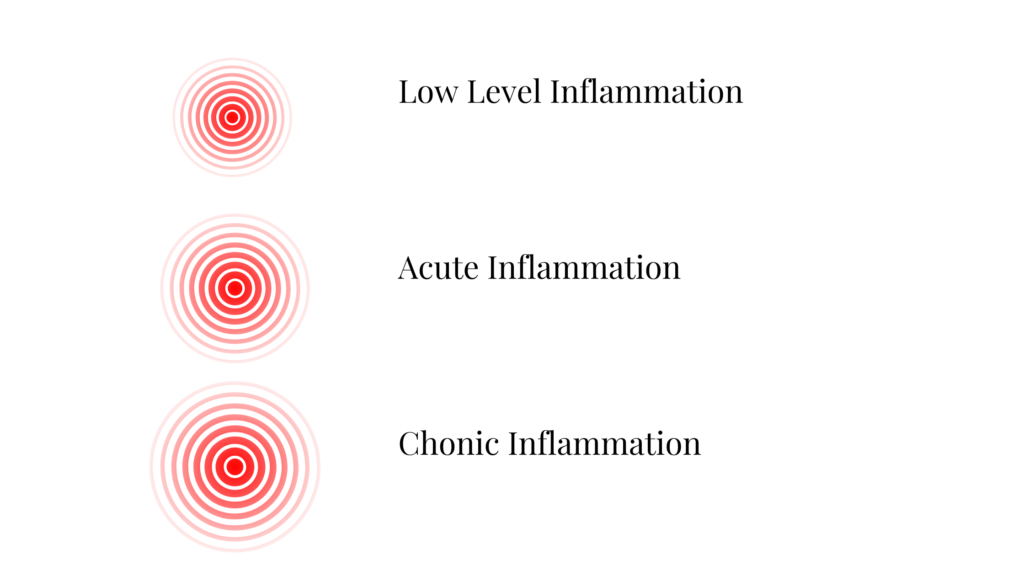
Levels Of Inflammation
Low-grade inflammation, acute inflammation, and chronic inflammation are different levels of inflammation that can occur in the body.
- Low-grade inflammation is a milder form that may not cause noticeable symptoms but can contribute to various health conditions over time.
- Acute inflammation is the body’s immediate response to an injury or infection, characterized by redness, swelling, heat, and pain.
- Chronic inflammation is a long-term inflammatory response that can be caused by various factors such as prolonged exposure to irritants, autoimmune disorders, or unresolved acute inflammation.
Effect of Diet-Induced Inflammation
Regarding diet, digestion may become inflammatory, especially when substantial amounts of ultra-processed foods are frequently consumed. Certain processed foods contain high levels of unhealthy fats, sugars, refined salt, and chemical additives, which can lead to inflammation in the digestive system.
This inflammation may, but not necessarily, manifest as bloating, gas, discomfort, or even more severe chronic issues such as irritable bowel or inflammatory bowel issues. Additionally, some processed foods can injure the delicate tissues of the digestive tract, further exacerbating inflammation and potentially leading to long-term health issues.
Normal Digestion Versus Inflammatory Response
However, during healthy digestion, some of these effects may be related to normal digestion and not necessarily inflammation. Typically, in healthy adults, the body’s digestive effects are not long-lasting and subside as part of its daily cleansing process.
Homeostatic Balance “MetaInflammation”
In the same way, in terms of low grade inflammation, Tristan Asensi M et al. (2023) suggests that the presence of low-grade inflammation disrupts the homeostatic balance, altering the crosstalk between immune and metabolic responses and promoting chronic metabolic inflammation – a sort of “metainflammation.”
They also suggest that, among the environmental and lifestyle factors that can promote or intensify inflammation, increasing scientific evidence supports the role of diet.
Preventing Unregulated Inflammation Through A Regular Anti-Inflammatory Diet
This is a crucial point because holistic sciences have emphasized the modern understanding of how diet significantly impacts one’s lifetime for generations. Various dietary plans and food types have been classified as sources of longevity.
For example, the Ayurvedic diet is anti-inflammatory due to the rich quantity of whole foods. Plant-based diets are recognized for their powerful nutritional benefits and preventive properties. These diets avoid ultra-processed foods, nutrient-deficient sources and empty calories.
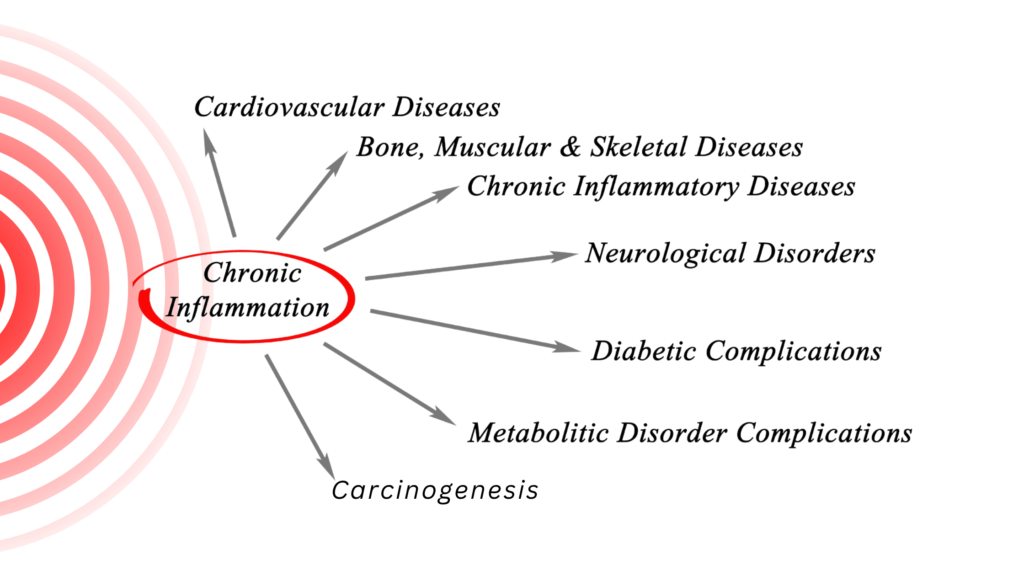
Hyper-Palatable Ultra Processed Food & Inflammation
Subsequently, Tristan Asensi M et al. (2023) state that Ultra-processed foods (UPFs) are characterised by being hyper-palatable, affordable, and ready-to-eat. Due to their nutritional composition, UPFs have led to a worsening of diet quality and have already been recognised as a risk factor for diet-related diseases. Current evidence highlights diet among the modifiable behavioural risk factors for developing non-communicable diseases.
The authors further state that UPFs fall into a Group 4 category foods;
Group 4 contains UPFs, defined as “formulations of ingredients, mostly of exclusive industrial use, that have little or none of the food intact and are typically created by a range of industrial techniques and processes”
Understanding UPFs
Tristan Asensi M et al. (2023) also suggest that most UPF are energy-dense products high in added sugars, saturated and trans fatty acids and sodium and low in protein, fiber and certain micronutrients including potassium, magnesium, vitamin C, vitamin D, zinc, phosphorus, vitamin B12 and niacin.
In the same way, they are also categorised by the presence of non-nutritive components. Such as additives and chemicals.
Additives are frequently added to make the final product more palatable, with better sensory qualities and longer shelf life. Commonly used additives in the manufacture of UPF include flavourings, emulsifiers and sweeteners such as aspartame, cyclamate or stevia-derived compounds.
Empirical Dietary Inflammatory Index (EDII)
Stumpf et al. (2023) suggest that the Empirical Dietary Inflammatory Index (EDII) findings from epidemiological studies might have been influenced by food preparation methods, such as deep-frying. Additionally, a recent meta-analysis reported a slight pro-inflammatory effect of tomato-based products. They also state that Western dietary patterns are increasingly associated with inflammatory markers.
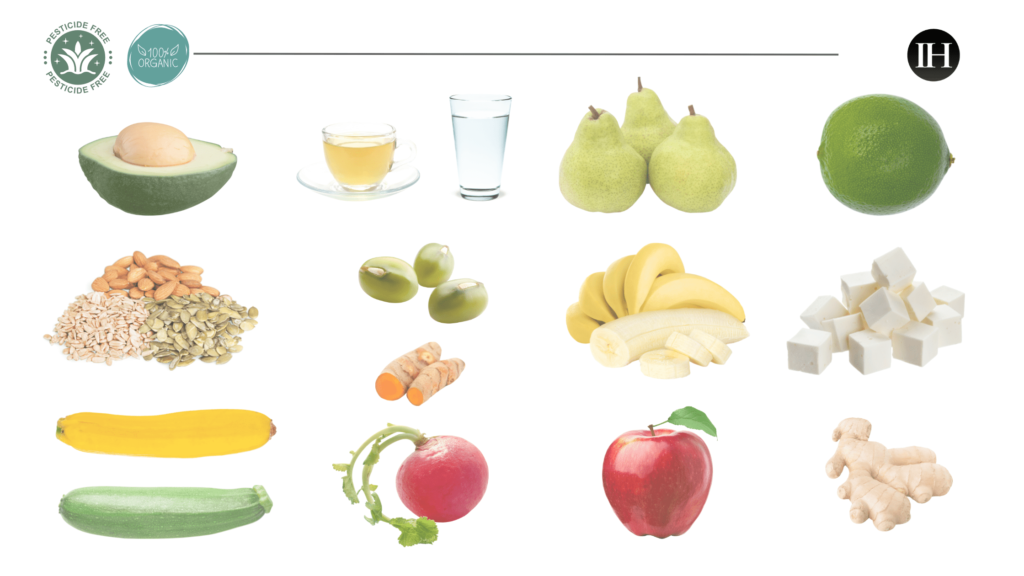
Anti-Inflammatory Nutrition & Foods Sources
Regarding anti-inflammatory nutrients, plant-based dietary patterns rich in natural vegetables, fruits, whole grains, and moderate natural protein sources are polyphenolic-rich. Several of the polyphenolic compounds are associated with substantial anti-inflammatory and anti-oxidative actions.
For instance, Tristan Asensi et al. (2023) conducted a meta-analysis involving 2300 subjects from 17 clinical trials. Their findings showed that higher consistency to the Mediterranean diet was linked to reduced levels of inflammatory biomarkers, specifically CRP and interleukin-6 (IL-6).
Similarly, an example of a food source is turmeric (Curcuma longa). A natural spice that contains compounds with anti-inflammatory and antioxidant properties. It contains, compounds such as curcumin and zingiberene which exhibit anti inflammatory properties.

Senescence & Anti Inflammatory Nutrition
Anti-inflammatory nutrition is a source of anti-ageing. According to Li X et al. (2023), long-term polyphenyl-rich dietetic pattern has been proved to improve intestinal permeability and the level of inflammatory markers. Balanced and adequate nutrition intake has a positive effect on aging.
Senescence is the biological process of aging and deterioration in cells, tissues, or organisms. It involves a decline in physiological function and an increased susceptibility to chronic issues. This process can be observed at the cellular level as cells lose their ability to divide and replicate. Secondly, there is an overall decline in physical and cognitive abilities at the organism level.
Anti-inflammatory nutrition and a natural polyphenolic-rich diet are body-centric as they offer combinations of several nutrition components. Due to their anti-inflammatory and anti-oxidative properties, they exhibit anti-aging actions.
Redox Balance & Oxidative Stress
Similarly, redox, which is short for reduction-oxidation, refers to the balance between oxidants and antioxidants in the body. Oxidants are molecules that cause oxidative damage, while antioxidants help to neutralize these harmful molecules.
This balance is closely related to the body’s inflammatory processes because oxidative stress can lead to increased inflammation.
A consistent bad diet and chronic stress can be triggers for oxidative stress and, in turn, inflammation.
Antioxidants play a crucial role in reducing inflammation by neutralizing oxidants and preventing oxidative damage to cells. In this way, they help to maintain the body’s redox balance and reduce the risk of excessive inflammation. Therefore, a diet rich in antioxidants can contribute to maintaining a healthy redox balance and reducing inflammation in the body.
Several polyphenolic-rich natural food sources, such as pumpkin seeds and various legumes, can exhibit potent anti-inflammatory and anti-oxidative activities combined.

The Example of Centenarians
The term “centenarian” is derived from the Latin word “centenarius,” which means “relating to a hundred.” It is used to describe individuals who have reached the remarkable age of 100 years or older.
According to, Li et al. (2023), Unlike other people, centenarians have significantly different levels of hormones, cholesterol, etc. in their bodies. Inflammation levels in centenarians show a better balance compared to others, and therefore inflammation levels have been used to predict healthy lifespan.
Although several factors are at play in terms of the centenarians, however, diet is one part of this.
Plant-based Polyphenols Promote Beneficial Bacteria: Pro & Prebiotics
As can be seen from several parameters and the holistic view of diet and nutrition, polyphenol-rich whole foods are body-centric sources of good nutrition, offering preventative and healing nutritional actions.
In terms of plant based foods such as vegetables, Stumpf et al. (2023) state that polyphenols have a regulatory effect on the gut microbiota. Around 90% are not absorbed in the small intestine but rather transported to the large intestine where they are metabolized by microbes into metabolites such as SCFA. Polyphenols may also have a beneficial effect on the composition of the microbiota, promoting growth of beneficial bacteria such as lactobacillus (a form of probiotic).
Due to the complex interactions of different nutrients within a particular diet, the focus has shifted towards research on the effects of dietary patterns instead of single nutrients.
Prebiotics are indeed fibers, and probiotics are substances that promote beneficial gut bacteria. Both prebiotics and probiotics have been shown to have anti-inflammatory properties and can help in maintaining the balance of the gut microbiota, which in turn influences the gut-brain axis. This relationship between the gut and the brain is an area of active research and has been supported by numerous studies.
Contributors In Anti-Inflammatory Nutrition
Here are some examples of natural whole foods that have anti-inflammatory properties:
- Vegetables: Courgette, pumpkins, garlic, fennel bulb, spinach, ginger, turmeric and others.
- Legumes: red lentils, green mung bean and others.
- Fibers: whole grains, oats, millet and others.
- Herbs and certain spices such as ginger, cumin and others.
- Herbal Teas & Waters: Several plant-based herbal teas or lukewarm herbal waters, such as dandelion, chamomile, and others, exhibit anti-inflammatory and anti-oxidative actions. Based on suitability, a herbal tea can be added to a well-balanced diet.
Summary
- The article discusses the role of anti-inflammatory nutrition in regulating the body’s natural inflammation responses for a healthy lifespan.
- It explores different levels of inflammation, the impact of diet-induced inflammation, the association of food and diet with inflammation, and the benefits of a natural anti-inflammatory diet. It also provides an overview of ultra-processed food’s influence on inflammation.
- Additionally, it examines the role of antioxidants in reducing inflammation and maintaining redox balance, and concludes with a discussion on the promotion of beneficial gut bacteria through plant-based foods, prebiotics, and probiotics.
- Centenarians are considered an example of longevity, and regulated natural inflammation in longevity, anti-ageing, and a healthy life span are points of holistic scientific reference.
Suitability & Precautions
This is an informational post and does not replace professional advice; before making any diet and lifestyle changes, seek the advice of a professional.
References & Data In This Article
- Li X, Li C, Zhang W, Wang Y, Qian P, Huang H. Inflammation and aging: signaling pathways and intervention therapies. Signal Transduct Target Ther. 2023 Jun 8;8(1):239. doi: 10.1038/s41392-023-01502-8. PMID: 37291105; PMCID: PMC10248351.
- Ferrucci L, Fabbri E. Inflammageing: chronic inflammation in ageing, cardiovascular disease, and frailty. Nat Rev Cardiol. 2018 Sep;15(9):505-522. doi: 10.1038/s41569-018-0064-2. PMID: 30065258; PMCID: PMC6146930.
- Stumpf F, Keller B, Gressies C, Schuetz P. Inflammation and Nutrition: Friend or Foe? Nutrients. 2023 Feb 25;15(5):1159. doi: 10.3390/nu15051159. PMID: 36904164; PMCID: PMC10005147.
- Stone WL, Basit H, Zubair M, et al. Pathology, Inflammation. [Updated 2024 Aug 11]. In: StatPearls [Internet]. Treasure Island (FL): StatPearls Publishing; 2024 Jan-. Available from: https://www.ncbi.nlm.nih.gov/books/NBK534820/
- Tristan Asensi M, Napoletano A, Sofi F, Dinu M. Low-Grade Inflammation and Ultra-Processed Foods Consumption: A Review. Nutrients. 2023 Mar 22;15(6):1546. doi: 10.3390/nu15061546. PMID: 36986276; PMCID: PMC10058108.



